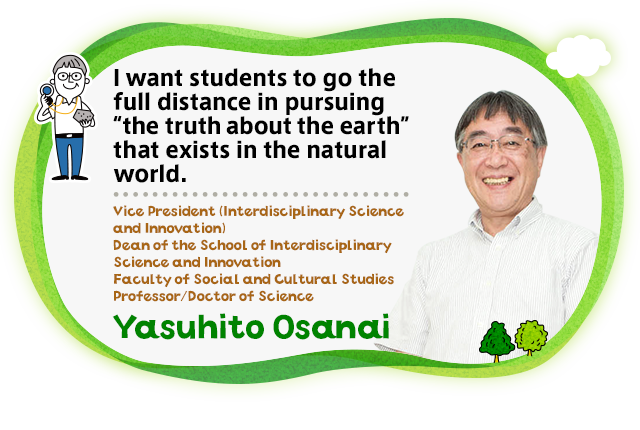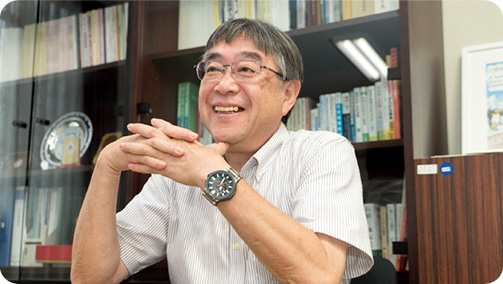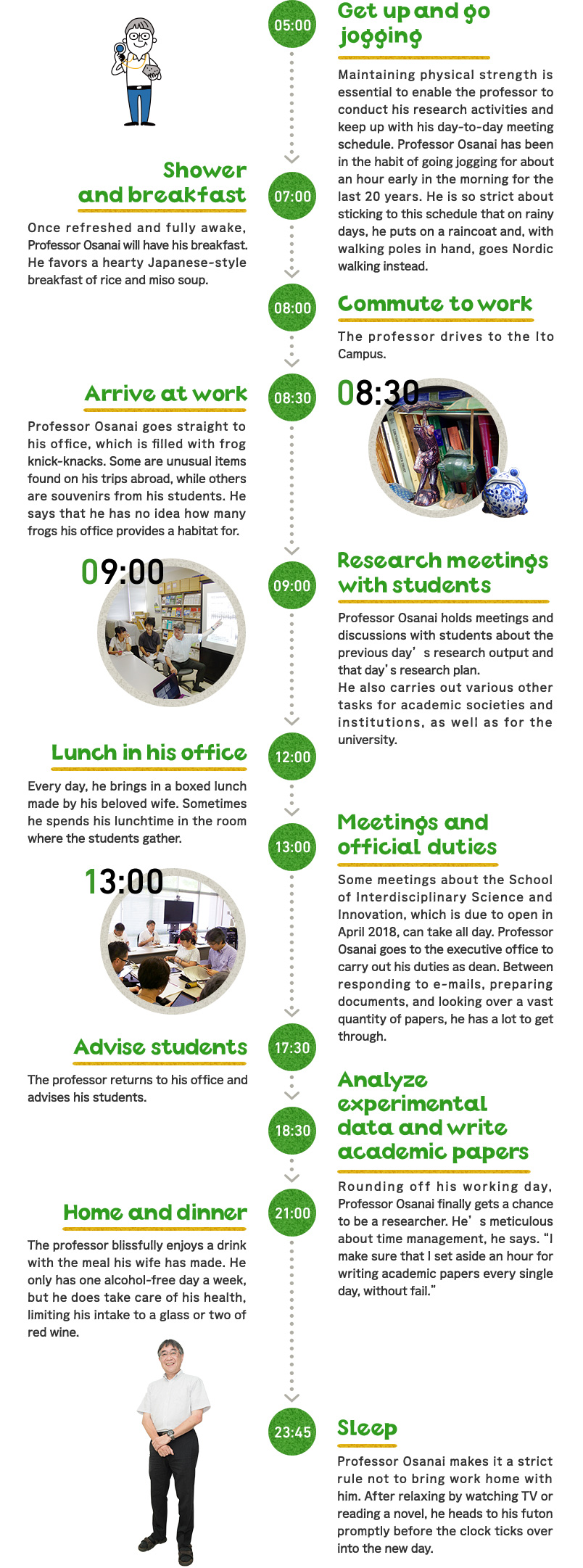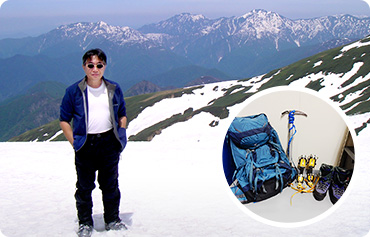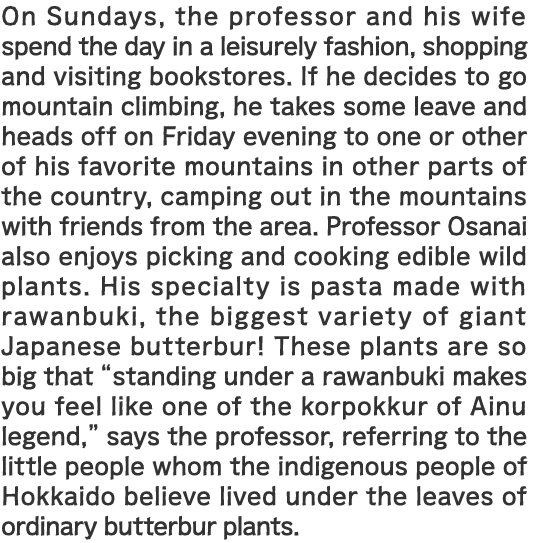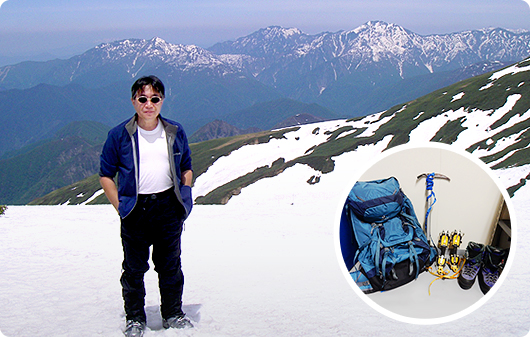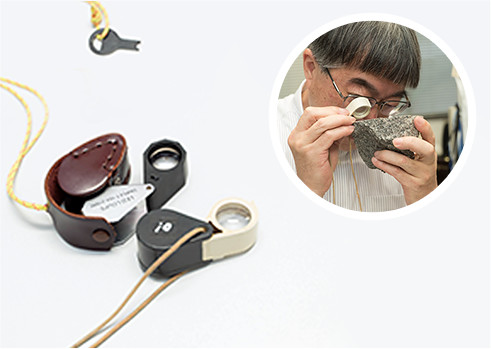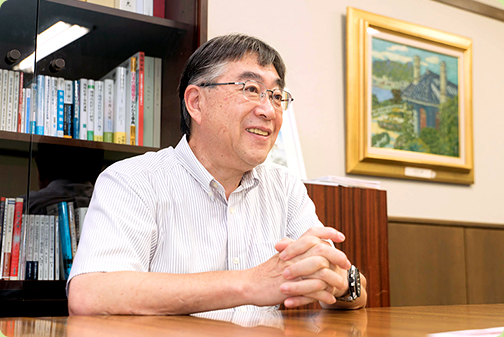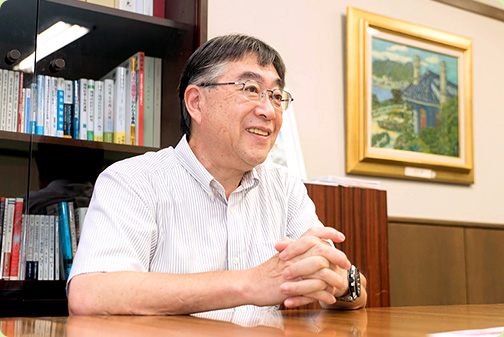 Antarctica, Vietnam, Mongolia...Professor Osanai travels the globe to conduct geological surveys. He is so energetic that he is always in short sleeves, even in the mountains of Hokkaido!
Antarctica, Vietnam, Mongolia...Professor Osanai travels the globe to conduct geological surveys. He is so energetic that he is always in short sleeves, even in the mountains of Hokkaido!
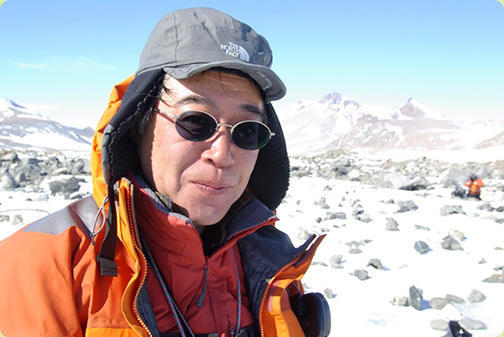 During a geological survey in Antarctica. Antarctica is sometimes called "Earth's treasure chest," because it is the region where the largest number of meteorites — which hold the key to the earth's creation — have been collected, as well as being home to what are regarded as Earth's oldest rocks.
During a geological survey in Antarctica. Antarctica is sometimes called "Earth's treasure chest," because it is the region where the largest number of meteorites — which hold the key to the earth's creation — have been collected, as well as being home to what are regarded as Earth's oldest rocks.
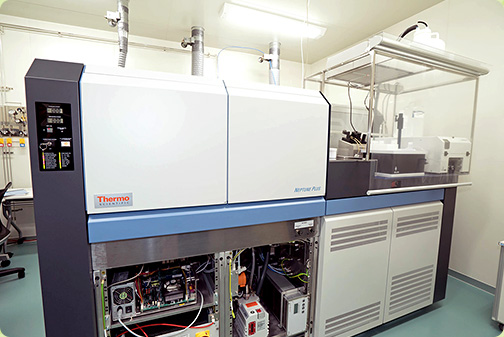 One of Japan's few advanced instruments for analyzing isotope ratios (laser ablation multi-collector inductively coupled plasma source mass spectrometer). It identifies the period when rocks and minerals were formed by analyzing isotopes of uranium and lead. Some Antarctic rocks have been found to have an absolute age of about 4 billion years.
One of Japan's few advanced instruments for analyzing isotope ratios (laser ablation multi-collector inductively coupled plasma source mass spectrometer). It identifies the period when rocks and minerals were formed by analyzing isotopes of uranium and lead. Some Antarctic rocks have been found to have an absolute age of about 4 billion years.
 Antarctica, Vietnam, Mongolia...Professor Osanai travels the globe to conduct geological surveys. He is so energetic that he is always in short sleeves, even in the mountains of Hokkaido!
Antarctica, Vietnam, Mongolia...Professor Osanai travels the globe to conduct geological surveys. He is so energetic that he is always in short sleeves, even in the mountains of Hokkaido!
You probably know that the continents were formed over hundreds of millions of years, joining together and splitting apart again. It has already been forecast that one big continent (a supercontinent) will be formed again 200 million years from now. Continents are sometimes a single continental landmass (a supercontinent) and sometimes split up into separate continents, like on Earth at present. Their movements form a cycle taking approximately 500 million years, so even now, our continents are continually moving toward the formation of the next supercontinent.
 During a geological survey in Antarctica. Antarctica is sometimes called "Earth's treasure chest," because it is the region where the largest number of meteorites — which hold the key to the earth's creation — have been collected, as well as being home to what are regarded as Earth's oldest rocks.
During a geological survey in Antarctica. Antarctica is sometimes called "Earth's treasure chest," because it is the region where the largest number of meteorites — which hold the key to the earth's creation — have been collected, as well as being home to what are regarded as Earth's oldest rocks.
In fact, this continental movement can be understood from deep crustal rocks. I collect deep crustal rocks (metamorphic rocks) from across the globe that have been brought to the earth's surface, subject them to precise analysis, and compare the results with experimental petrological data. Through this, I identify what changes metamorphic rocks have undergone before now. Based on this research data, I analyze dynamic crustal movements over the last 4 billion years through to the present day and on into the future. You could call the minerals in rocks — and indeed the rocks themselves — the earth's living witnesses. They are packed with the whole history of the planet since its birth and we can utilize modern technology to identify which natural phenomena occurred and in what period.
 One of Japan's few advanced instruments for analyzing isotope ratios (laser ablation multi-collector inductively coupled plasma source mass spectrometer). It identifies the period when rocks and minerals were formed by analyzing isotopes of uranium and lead. Some Antarctic rocks have been found to have an absolute age of about 4 billion years.
One of Japan's few advanced instruments for analyzing isotope ratios (laser ablation multi-collector inductively coupled plasma source mass spectrometer). It identifies the period when rocks and minerals were formed by analyzing isotopes of uranium and lead. Some Antarctic rocks have been found to have an absolute age of about 4 billion years.
To unravel the movements of the continents, it is vital to analyze the chemical composition and constituent minerals of (ultra) high-temperature metamorphic rocks formed in the earth's layers all the way from the deep crust through into the mantle and work out the process of transition in temperature or pressure from the results. It would be a quick process if we could collect samples of substances directly from the deep crust, but the earth has a radius of about 6400 km and the boundary between the crust and the mantle is located at a depth somewhere between 30–50 km from the surface. However, even the world's most advanced mining technology can only drill down to a depth of about 10 km, so we cannot reach the deep crust. Accordingly, I research continental formation and evolution processes by analyzing the substances in the earth's deep crust, replicating the physical conditions (temperature and pressure) inside the earth in my lab and running simulations to find out what kinds of minerals and rocks can exist in a stable form under those conditions. In recent years, geoscientific analytical techniques have begun to be used for analyzing not only rocks and minerals, but also archaeological materials such as artifacts made from stone, metal, and clay, as well as human bones and teeth. Thus, completely new developments in archaeological research are being pursued right now.

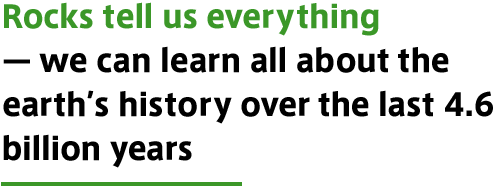
We unravel our planet's magnificent history in units of hundreds of millions of years. But at the same time, natural disasters that occur on a monumental scale — earthquakes, tsunami, volcanic eruptions, major landslides, and the like — also form part of our research, because they too are aspects of major changes in the earth's surface layer. Revealing the history of the planet over the last 4.6 billion years sheds light on natural phenomena around us and also clearly shows us what Earth will look like in the future. There is no room for romantic visions in the geosciences. It is an extremely practical field of learning that is closely connected to the daily life of humankind, offering a great deal of knowledge that people on our planet ought to understand, even if they are not researchers. Geology sheds light on how our planet has changed and forecasts its future shape. These forecasts are closely related to our lives today and have useful information to offer. That is the biggest part of the appeal of the geosciences, I believe.

![]()




